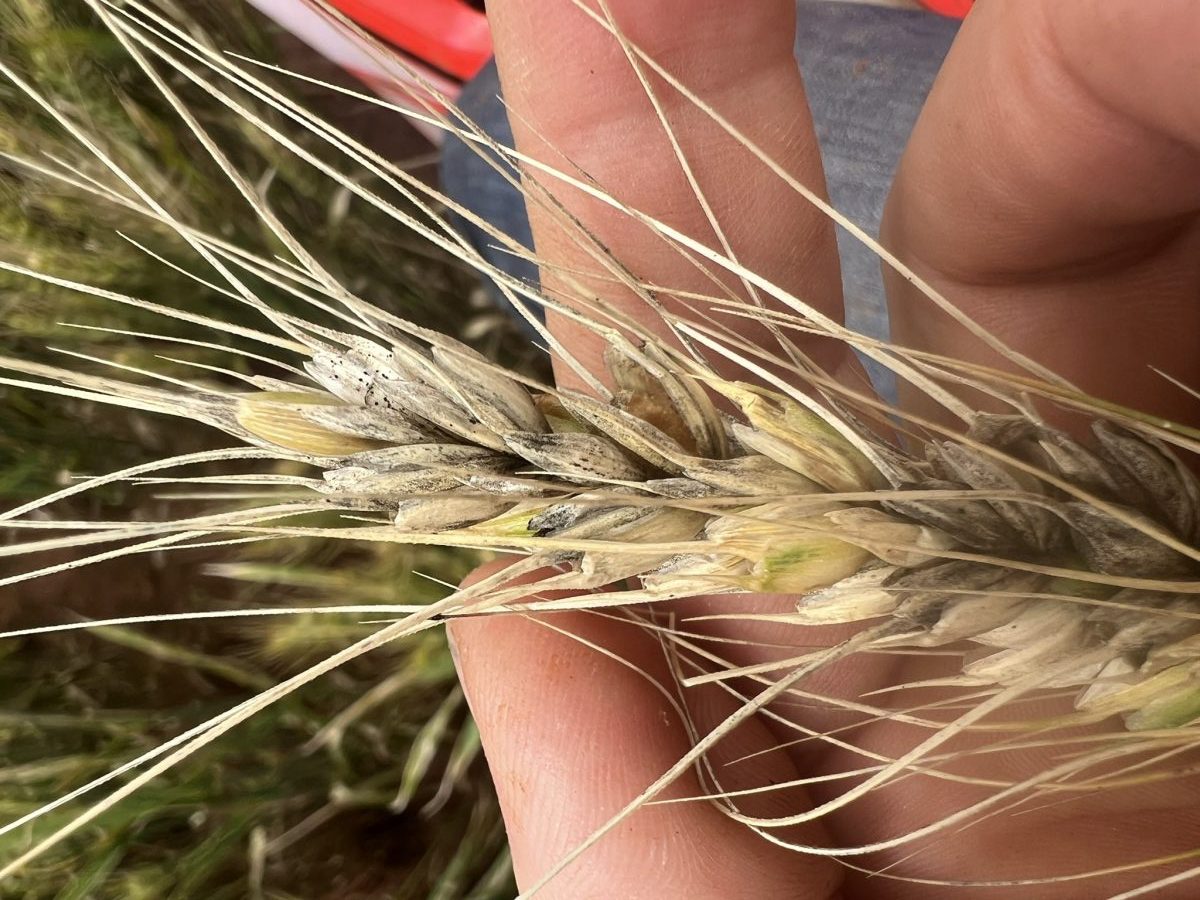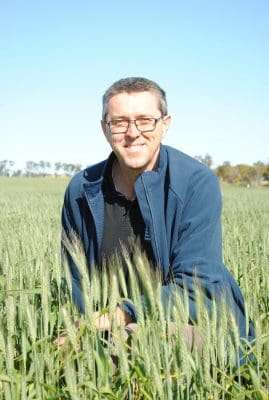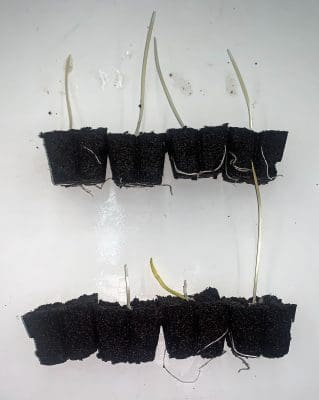
Some wheat crops harvested this year are producing grain not suitable for use as seed. Photo: Barry Haskins, Griffith
WHEN harvesting cereal seed for planting in 2023, it pays to consider the potential risks of retaining low-protein, rain-damaged grain, according to CSIRO’s Agriculture and Food chief research scientist Greg Rebetzke.
“The risk in wet harvest years is with rain-damaged grain, which can be obvious as fully sprouted, discoloured or diseased grain in the head,” Dr Rebetzke said.
“What is less obvious is grain that has started the germination process but then dried down, often resulting in partially-wrinkled or cracked grains that have compromised seed quality.”
 To avoid poor germination and low-vigour crops in 2023, Dr Rebetzke has suggested growers retain seed from their most fertile paddocks and avoid diseased, sprouted or weather-damaged grain where possible.
To avoid poor germination and low-vigour crops in 2023, Dr Rebetzke has suggested growers retain seed from their most fertile paddocks and avoid diseased, sprouted or weather-damaged grain where possible.
“Once harvested, grade and retain the larger seed.
“Avoid storing moist seed and aim to keep seed well-aired and cool.
“A basic seed germination and vigour test will determine if the seed is suitable for planting.”
When cereal grain commences germination, starch is rapidly converted to sugars, reducing the energy available to the growing seedling the following season.
Weather-damaged seeds produce seedlings with fewer seedling roots, shorter and thinner coleoptiles and variable seedling emergence.
Depending on the extent of the weather damage, the seedlings can have reduced leaf area and slow root growth, potentially limiting their ability to access soil nutrients and moisture.
Slow-growing seedlings struggle to compete against weeds that germinate and grow in the first few weeks after sowing.

Dr Greg Rebetzke.
If a portion of the retained seed is low quality, Dr Rebetzke recommends germination and vigour testing, and adjusting seeding rates to compensate.
Sowing at a shallower depth than usually practiced will help seedling emergence.
“Prior to the wet conditions at harvest, many growers were managing very high-yielding crops and faced with high nitrogen fertiliser costs.
“The high fertiliser cost, crop access to fertiliser and high grain yields have increased the risk of ‘protein dilution’ in grain this harvest.”
Dr Rebetzke said there was little data available to help understand the implication of low grain protein on seedling growth.
“Some older data shows a strong relationship between seed protein and both shoot and root weight.
“Regardless of seed size and variety, if the protein levels are low, seedling growth may be negatively affected.”
Seed quality is vital to setting a crop up to compete with weeds and maximise the efficacy of pre-emergent herbicides.
Sowing poor-quality seed can easily contribute to a weed blow-out that reduces crop yield and increases the risk of herbicide resistance in weeds.
“Vigorous seedlings are an inexpensive way to help control weeds, increase water-use efficiency and grow more grain.
“Larger shoots, leaves and roots will allow the crop to better compete for resources above and below the ground, helping to choke out any weeds.
“Well-established seedling root systems are also a major advantage later in the season to enable the crop to access moisture and nutrients deeper in the soil profile.”

Rain-affected seed was used to grow the lower seedlings. They show reduced germination and propensity to produce seedlings with slow root and shoot growth, and struggle to compete against weeds that germinate and grow in the first few weeks after sowing. Photo: WeedSmart
To maximise the weed suppressive power of next year’s cereal crops, growers are advised to start with the best available quality seed, sow on time and at the correct depth, increase the seeding rate and sow on narrow rows if possible.
A competitive crop can halve the number of weed seeds produced, helping to keep weed numbers low and maximising crop yield.
The WeedSmart Big 6 is an integrated weed management program that growers can apply across all cropping systems.
A diverse approach that includes several chemical and non-chemical tactics places downward pressure on the weed seed bank and reduces herbicide resistance risk.
Source: Cindy Benjamin, WeedSmart



HAVE YOUR SAY